|
amoco-vel
Figure 2 A 2-D synthetic velocity model made up of constant velocity layers. |  |
VELOCITY SELECTION TESTS To test the methodology I applied it to several different velocity models. The first model is a 2-D synthetic, provided by BP, attempting to emulate North Sea geology (Figure 2). The model is composed of several constant velocity layers. For this test I used the entire velocity model as an input, even though when doing migration each depth step will by analyzed independently. Figure 3 shows a histogram of the velocity function overlayed by the initial reference velocities (0) and those after five (5) and twenty iterations (*). Note how all of the major velocities are identified by the method.
|
amoco-vel
Figure 2 A 2-D synthetic velocity model made up of constant velocity layers. |  |
|
amoco-hist-overlay
Figure 3 A histogram of the velocity function overlayed by the initial reference velocities (0) and those after five (5) and twenty iterations (*). | 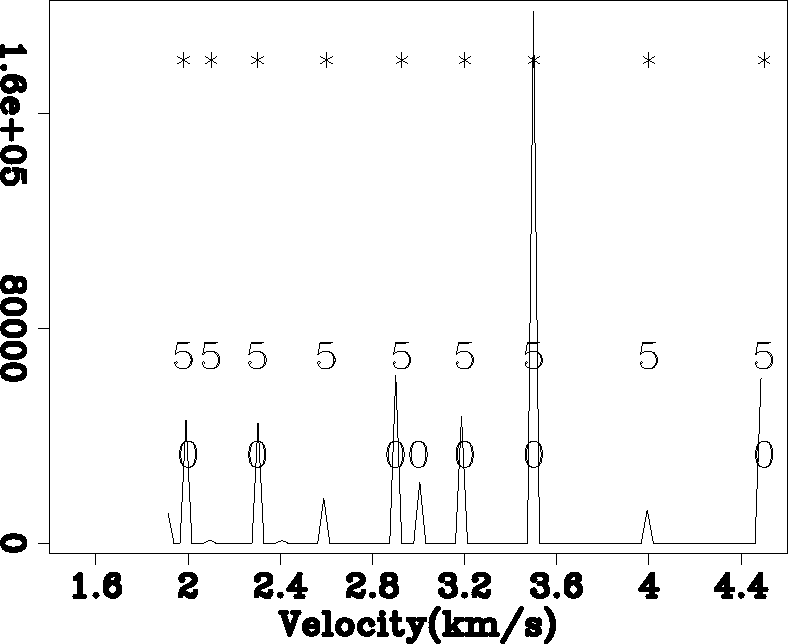 |
For the second example I smooth the velocity in Figure 2 to obtain the velocity in Figure 4. Figure 5 shows the selected velocities. Note how the initial velocities were clustered around 3.6 km/s. The final velocities are generally more spread out, closer in velocity ranges with high count. Also note that in each region the velocity that is most common is chosen as a reference.
|
amsm-vel
Figure 4 A smoothed version of the model in Figure 2. | 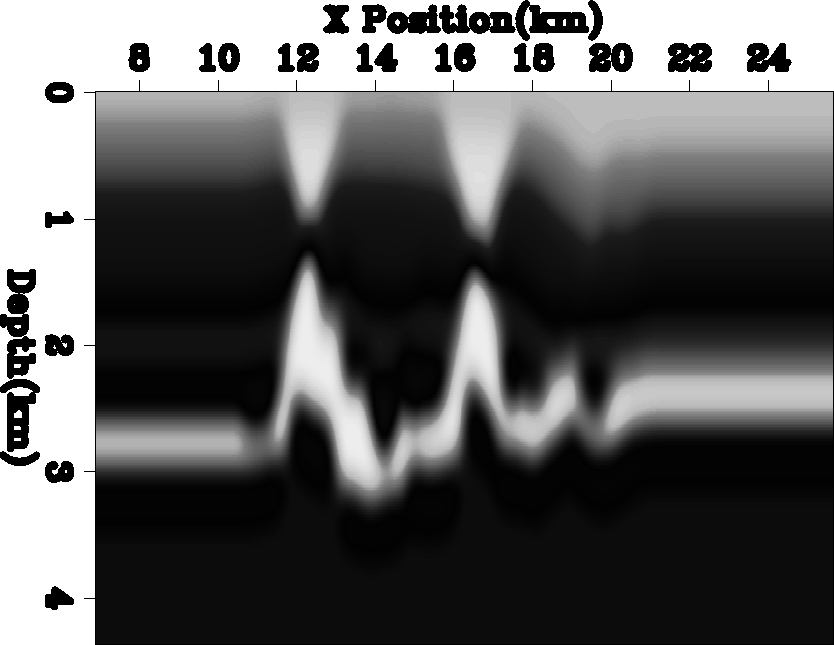 |
|
amsm-hist-overlay
Figure 5 A histogram of the velocity function in Figure 4 overlayed by the initial reference velocities (0) and those after five (5) and twenty iterations (*). | 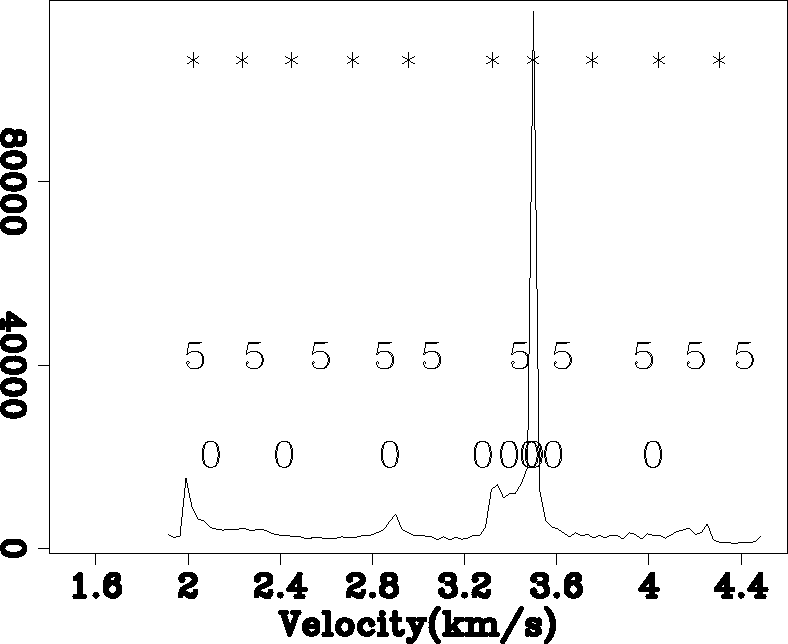 |
To test the method's ability on functions with bimodal distributions (such as regions with salt), I used the upper (Figure 6) and lower (Figure 8) portion of the SMAART JV Sigsbee synthetic. Figures 7 and 9 show the selected velocities. Note how in each example the method determined that fewer reference velocities were needed. In each case a single reference velocity between the two modes of the distribution (this reference velocity was kept because some velocities still fall in this region).
|
zig1-vel
Figure 6 The top portion of the Sigsbee synthetic. | 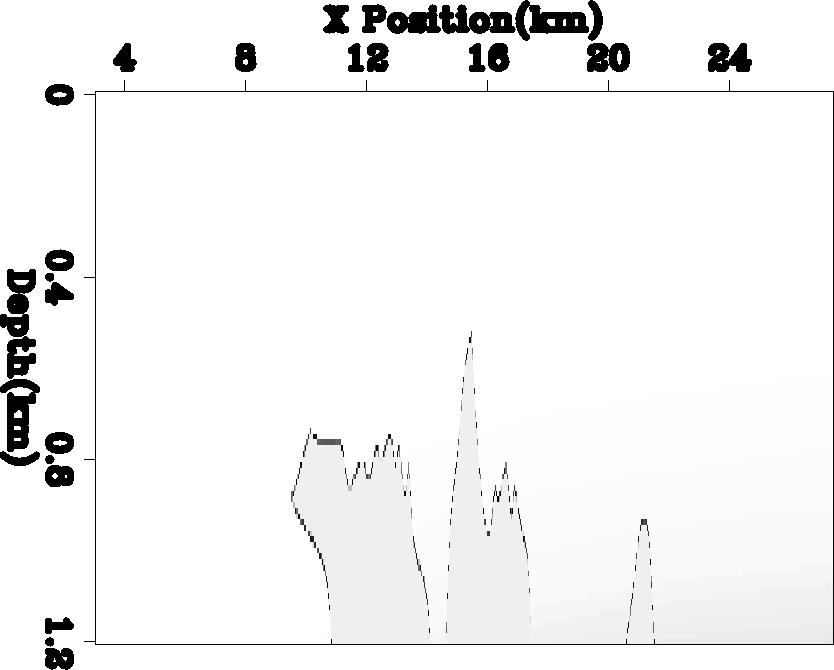 |
|
zig1-hist-overlay
Figure 7 A histogram of the velocity function in Figure 6 overlayed by the initial reference velocities (0) and those after five (5) and twenty iterations (*). | 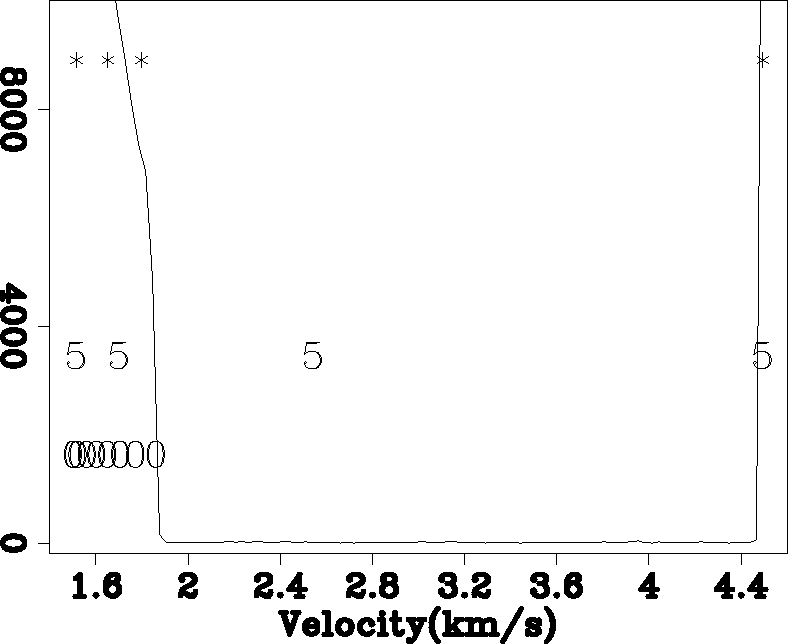 |
|
zig2-vel
Figure 8 The bottom portion of the Sigsbee synthetic. | 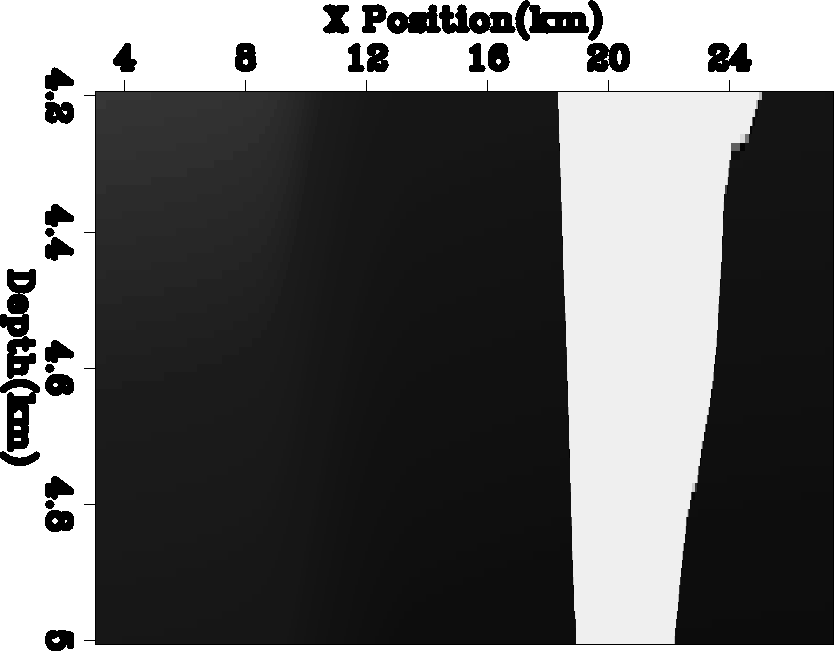 |
|
zig2-hist-overlay
Figure 9 A histogram of the velocity function shown in Figure 8 overlayed by the initial reference velocities (0) and those after five (5) and twenty iterations (*). | 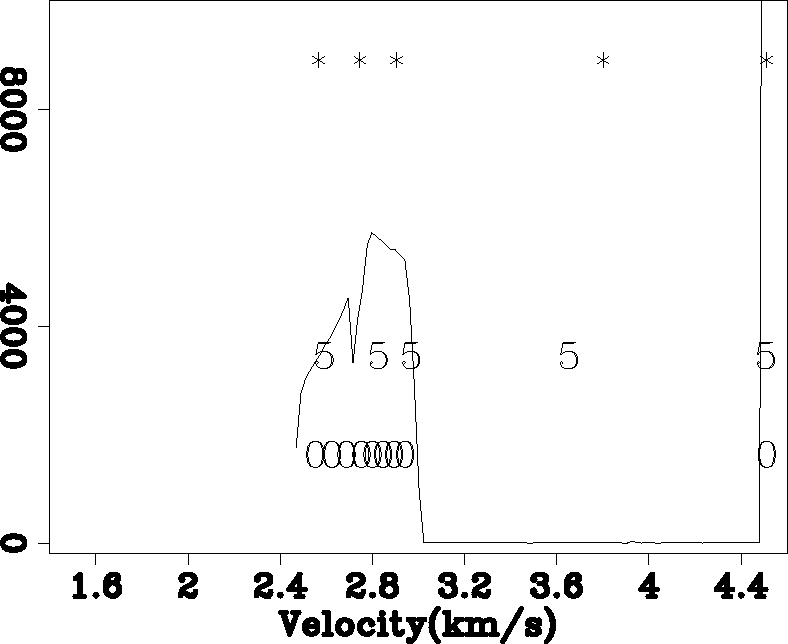 |